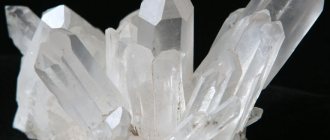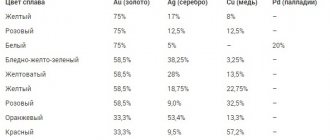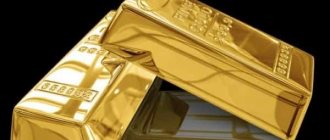After a strong rise in gold prices in 2018-2020, from a level of approximately $1,200 to a level of almost $2,100 per troy ounce, the price took a pause for 13 months for correction and consolidation in a wide range of $2,070-1,670 per ounce.
We believe that this consolidation is coming to an end and will soon be replaced by a new wave of growth, which will lead to the price consolidating above the $2,000 mark
, and subsequent testing at levels of approximately $2,500 dollars per ounce.
Such “round numbers” have psychological significance for market players and, as a rule, are “magnets” for taking profits / opening new positions.
What could serve as a catalyst for such an increase in the price of gold?
A combination of factors.
Declining trust in public institutions and states
Gold is a political asset: it is bought not because of a good life, but in order to insure against political risks. The less confidence in the future and the stability of the financial and political system, the stronger the demand for gold as a conservative hoarding asset that allows minimizing the risks of expropriation, devaluation and depreciation of capital.
The campaign to force the introduction of “vaccine passports”/quar codes caused negative public outcry and protests in many countries, which became one of the factors in the growing distrust of part of the population in the media and government institutions.
This is explained by the fact that existing vaccines against COVID-19 do not
prevent infection of vaccinated people, and therefore, the status of “vaccinated / not vaccinated”
in any way
affect whether a person can be a potential carrier of the virus, i.e., pose a “potential danger” to others.
The argument “vaccinated people are less likely to catch the virus and get sick more easily” is not valid to justify compulsory vaccination: how “severely” or “easily” you get sick is your own business, not concerning the state and society. The only thing that matters to society is whether you pose a “danger” to others.
If you do exercises every morning and maintain good immunity, this can also contribute to a “mild” or even “asymptomatic” course of the disease. But we do not see that those who are not
does exercises in the morning - because this is everyone’s personal business.
The large-scale use of coercive measures in the absence of adequate logical grounds gives rise to conspiracy theories and mistrust of the state and public institutions, including the media.
Meanwhile, the world of finance is entirely built on trust, and the word credit itself (Latin credito) means “trust.”
Money is a collective illusion, also based on trust. You trust that these colored cut-out pieces of paper are worth something, and you are ready to exchange your labor and your property for them.
But as soon as trust in the state/social institutions decreases, people begin to avoid money and prefer to keep their capital in assets - be it physical assets (real estate, precious metals) or financial ones (stocks and securities).
This boosts asset prices - something we see firsthand in a wide range of markets - from real estate to stocks.
Inflation
The world has entered a period of stagflation - this is when the economy stagnates or even contracts, but prices rise uncontrollably. In such a situation, holding capital in cash, on deposits or current accounts, or even in the form of banknotes “in a mattress / stocking” means losing capital due to the depreciation of money.
Depreciation occurs unevenly: over a given period of time, the prices of certain things accelerate, then the virtual “relay race” passes to other categories of goods/services.
Currently, there has been strong growth in various categories of commodities (from energy to food and building materials), while prices of gold and other precious metals have stagnated.
Sooner or later (and sooner rather than later), the “baton” will again pass to the already quite “undervalued” and “lagging” precious metals.
Market sentiment and technical factors
Gold is highly oversold both in terms of market sentiment and in terms of technical indicators on the chart - such as moving averages (for example, the 200-day average) or stochastics.
The situation on the gold chart resembles a “compressed spring”, ready to begin to open up at any moment. The signal for this will be the price consolidating above the level of $1.835 dollars per troy ounce.
Uncontrolled emissions
Since the model of the modern “welfare state”, most clearly implemented in Europe, is currently bankrupt, states are forced to finance their needs (and budget deficits) virtually from the “printing press”, forcing them to constantly increase the issue of money. This also does not add confidence to the financial system, and encourages market players to look for hoarding tools that reduce the risk of capital impairment.
Related materials
00:11 — March 11, 2016
The end is near
Why the IMF and Rothschild passed judgment on the global economy
The largest seller of gold in February was Turkey, which sold over seven percent of its gold reserves on the market - about 1.2 million ounces (37.3 tons). Canada, one of the top 10 global producers, is traditionally among the largest sellers of the precious metal. Almost all gold mining in this North American country is sold. The Bank of Canada, one of the main players in the gold market, retains only a symbolic 100 ounces (just over three kilograms).
The US Federal Reserve, the ECB and the Reserve Bank of Australia are also considered major players among the world's central banks. The most influential companies are UBS, Morgan Stanley, Goldman Sachs, and Citibank.
In general, the Bank of Russia does not have a significant influence on the relationship between supply and demand on the global gold market. In addition, the IMF statistics do not indicate from whom and in what volumes the Central Bank bought gold.
It can be assumed that the Bank of Russia buys precious metals from Russian producers for Russian currency. This is being done, firstly, in order to support domestic gold miners. An industry organization - the Union of Gold Miners of Russia - last April turned to the Central Bank with a request to buy almost the entire volume of precious metal mined in 2015, 240 out of 290 tons. In this way, industrialists hoped to compensate for the increase in loan rates caused by the regulator’s tough policy. The Central Bank has already saved gold miners, purchasing 171 tons of the 288 tons produced in 2014. The remaining 76 tons were purchased by European banks.
Central processing plant of the Berezovsky gold mine in the Sverdlovsk region
Photo: Pavel Lisitsyn / RIA Novosti
Gold producers asked the Bank of Russia for help last year.
Another reason for buying gold is the obvious desire to increase state reserves. Currently, their volume is about 390 billion dollars. Gold accounts for about 15 percent - 1446.3 tons. Within three to five years, the Central Bank plans to increase reserves to $500 billion. Including through gold.
“The good thing about gold is that it loves bad news,” notes Sergei Khestanov, macroeconomics adviser to the general director of the Otkritie brokerage house. This asset usually does not generate much income. The only advantage of gold, the expert says, is its relative reliability. In the event of serious disasters and a sharp drop in the price of other assets, gold will most likely retain its basic value. Therefore, as a rule, they buy it to insure against all kinds of risks. “As funny as it may be, massive purchases of gold by central banks are usually followed by a drop in its price,” the expert notes.
Yakov Mirkin
Photo: SWOP lecture hall
Economist Yakov Mirkin also views gold as an asset that attracts investors during a crisis. “Like other metals, gold has an inverse trend relative to the dollar. But during financial crises, its price behaves differently: when commodity prices fall, gold can begin to rise, as it did in 2008-2009. Gold, as a special commodity with a “monetary imprint,” can be considered a safe haven at this moment,” he writes in his book “1971-2025: Exchange Rates, World Commodity Prices, Stock Prices.” During a crisis, the price of the yellow metal may also fall, but in comparison with other commodities, the rate of this decline is much lower, including due to demand. “Now gold behaves in the same way as all metals,” the economist noted in an interview with Lenta.ru.
In February, gold could be considered the most attractive asset: in the month alone, its price jumped by more than 10 percent. By February 29, a troy ounce cost $1,233. Since the beginning of the year, the precious metal has risen in price by 16 percent. This is despite the fact that US Treasuries rose only 2.9 percent, and the MSCI All-Country World Composite Index fell 6.2 percent.
However, according to experts, gold will go down. According to Mirkin’s calculations, the decline will last until 2021, and until 2021 the price will fluctuate in the range from 370-400 to 880-930 dollars per troy ounce. Then a recovery should begin, which will take prices to new levels: from 590-620 to 1380-1460 dollars per ounce in 2025-2027.
Investing in gold is not the most profitable type of investment, even among operations with other precious metals. Speculators prefer silver because price fluctuations are more dynamic.
Investment gold market in Russia
currently no shortage
on the investment metal market: Central Bank issues gold investment coins “St. George the Victorious” of all variations and denominations: 50 rubles (7.78 grams of gold), 100 rubles (15.55 grams of gold), 200 rubles (31.10 grams of gold) , and 25 rubles (3.11 grams of gold).
Currently, the prices of gold coins of St. George the Victorious in the most common denomination (50 rubles) fluctuate among private dealers in the range from 36,000 to 38,000 rubles - depending on the year of minting, the mint, and the condition of the coins - which constitutes a spread of “exchange premiums” ( premium price of gold in coins to the exchange value of gold) from 9 to 15%. By Russian standards, this is very little; there were worse times, when coins were traded at a premium to the exchange of 20-25%, due to the shortage. Follow the news and quotes!
Authors: Gold Reserve, analytics department September 15, 2021
Gold exports will increase
Purchasing gold adds ruble liquidity to the system (the metal is bought for rubles), which, against the backdrop of inflation risks due to the weakening of the ruble, cannot suit the Central Bank, says Egor Susin, head of the Gazprombank Strategy Development Center, another factor. In addition, there is no longer such a need to purchase gold for reserves, since they are declining, and the share of gold in them is growing.
The Bank of Russia's suspension of gold purchases on the domestic market will serve as a further incentive for the export of Russian gold abroad. In May 2021, the Central Bank introduced discounts on the purchase of gold to the world price to encourage gold miners and banks to sell more of the precious metal for export. This policy has already made it possible to increase Russian gold exports eightfold in 2021, to $5.74 billion from $0.7 billion in 2021. More than 90% of this volume went to the UK as the largest gold trading center.
Susin does not rule out that the Bank of Russia could suspend gold purchases, among other things, to support exports. Gold, as one of the export goods, can now compensate for at least part of the losses for the Russian economy. “But in the context of GDP and total exports, this is still not a very significant volume. Russia’s total exports, even after the fall in oil prices, are expected to be more than $250 billion,” the expert said.
Kostroma has joined the Siberian gold miners
In 2021, the price of gold went up again, crossing the psychologically significant mark of $1.5 thousand per troy ounce. As a result, the geography of exporting regions instantly expanded: Irkutsk, Amur, Kostroma regions and Khabarovsk Territory were added to Sverdlovsk and Krasnoyarsk. Export volumes increased more than five times: gold bars weighing 116.2 tons worth $5.5 billion were sent abroad.
The appearance of Kostroma may be surprising (the Ural and Siberian regions have been famous for their gold reserves and mining for decades). In this region, gold mining began not so long ago; only at the very end of the 20th century the presence of sufficient gold reserves in the Kostroma subsoil was confirmed. Industrial mining began in 2013, when the state held two auctions for the right to develop the Chabra (projected reserves - 630 kg of placer gold) and Zastavskoye (reserves - 700 kg) sites. The total area of gold deposits in the region, according to local authorities, was about 2 thousand square meters. As a result, in 2021 Kostroma has already sold 4.8 tons of gold for export.
Experts attribute the decline in the share of precious metal exports to last year’s tragedy, when on October 19, 17 workers at the Sisim gold mining enterprise died due to a dam break. Photo: Main Directorate of the Ministry of Emergency Situations for the Krasnoyarsk Territory










